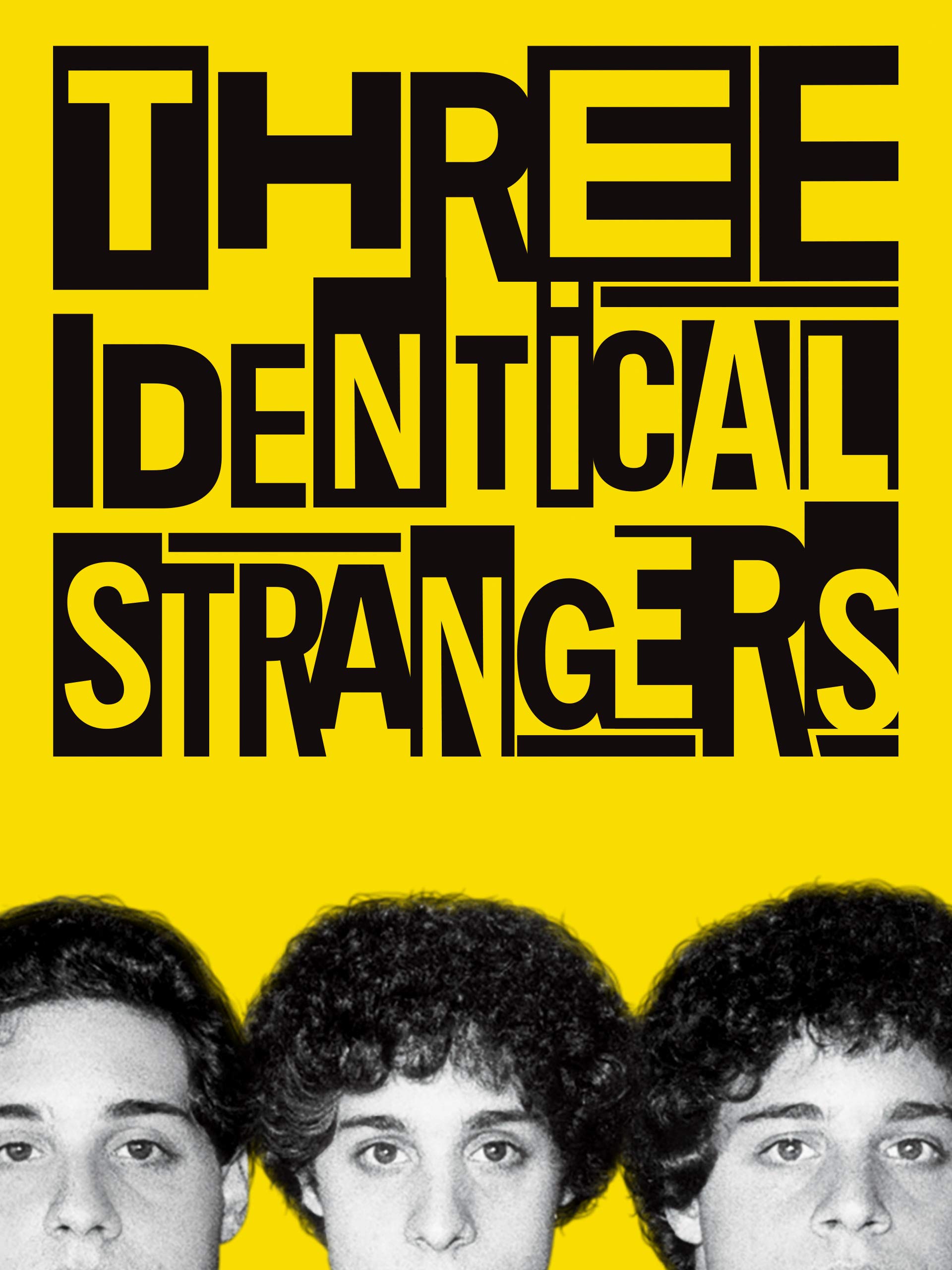‘Three Identical Strangers’


Exploring this age-old conundrum is the context of the recent documentary “Three Identical Strangers” (now available on streaming video). It’s a fascinating exploration of a remarkable true story: identical triplets, separated at birth, put out for adoption, then reunited, only to find that all their lives they have been caught up in a spiral of manipulation and circumstance beyond their control.
The film’s hard-to-believe tale, meticulously constructed by the talented writer/director Tim Wardle, unfolds chronologically, shocking disclosure by disclosure. Its main protagonists are three young Long Island men (Bobby, Eddy, and David), who up until age 19 are living the life they assume fate has dealt them, blissfully unaware of the machinations that have structured almost every aspect of their very existence.
Through a serendipitous accident, one of them discovers that he is not alone in his assumed cocoon of existence — that there is someone else who looks exactly like him, an identical twin brother adopted into another family. The surrounding publicity immediately leads to yet another discovery, that the two are not alone, but there is a third. They are not twins, but triplets.
Having evolved as identical (not fraternal) brothers from one fertile egg that split into multiple embryos at the very beginning of their lives, the three boys look alike, talk alike, act alike (in a 1980s interview, they boast, “We even smoke the same cigarettes”). But as the film reveals, the initial euphoria over their similarities masks some unacknowledged differences — despite their identical biological origins, they are definitely individuals, with separate makeups that affect their interactions with each other and the outside world.
These differences, which may be genetic as well as environmental, play themselves out with what in retrospect are predictably tragic results. Having embarked on an ill-advised joint business venture (a trendy restaurant called Triplets), the brothers find that potentially hereditary mental illness intrudes on the day-to-day contextual stresses of the situation itself, resulting in one’s unexpected suicide and the others’ retreat into their own shells.
The film’s dark subplot then emerges: In a hubristic effort to resolve that mysterious psychological/cultural puzzle — to what degree are our lives determined not only by our nature but by our nurture — outsiders have conspired to control the brothers’ marionette strings for much of their lives. In order to explore this issue, prominent medical/psychological researchers devised what sounded like a perfect experiment— if they placed three identical children (the triplets) into three different controlled environments (carefully chosen and prepped adoptive homes), and then analyzed their resulting behavior and growth, they could answer the puzzle once and for all (one assumes to their professional — and economic— glory).
What, in their zeal, the investigators didn’t anticipate (but should have realized) was the effect the insensitive framework of the experiment itself, and the clumsy intervention of the researchers, had on the brothers and their families. The professional participants’ lack of both ethical reflection and consideration of unintended consequences was astonishing, and the collusion of the doctors, the study founders, and the adoption agency verged on the criminal.
Once informed of the artificiality of the life structured for them, the parents sue (unsuccessfully) for more detail of the experiment and responsibility for its results. The brothers themselves are outraged. “How does it make me feel?” asks one retrospectively. “Like a lab rat!”
The second part of the film documents the step-by-step search for ‘Why did this happen?’ The filmmaker engages and documents the efforts of Lawrence Wright, a driven journalist who tracks down and interviews whomever he can who was involved in this ethically compromised scientific endeavor. Unfortunately, the main protagonists are dead, and the research material is locked in a Yale University vault until late in the 21st Century.
The film does present, however, discussions with two participants — although only briefly involved as graduate assistants, they reveal with unnerving casualness their lack of concern with the residue left by the experiment, and use its lofty goals to justify its dubious methodology. This attitude is all the more astonishing given many of the participants’ background as direct and indirect Holocaust victims of Nazi manipulations (the study leader, a distinguished psychoanalyst, and his associates, his funders, and the participating adoption agency were themselves mostly Jewish individuals and institutions).
The film skillfully weaves these personal and philosophical threads into an engrossing tapestry, building suspense by its sequential revelations, as first the brothers, then the adoptive parents, comprehend and contend with the issues involved, followed by the detective-like discovery of the shocking backstory.
But the documentary’s reportorial structure fails it as a documentary. Its story-telling need to have a beginning, middle, and end leads to a final return to the topic of one brother’s suicide, searching for a cause where one may not readily exist. Discussions with surviving brothers and relatives speculate on a sometimes-rocky parental relationship, culminating in a painful “60 Minutes”-like interview in which the adoptive father is pressed to admit potential fault as a remote disciplinarian.
Given the film’s careful structuring up to now of both sides of the heredity/context conundrum, this final coda is a jarring shift. Whether the home environment was contributing or not, to assert it as the primary cause of an essentially irrational act feels as if the filmmaker Wardle is putting his thumb squarely on the scales for nurture (in this case, a lack of it) versus nature (potential mental illness) — falling back on his own opinion to answer the unanswerable question of cause and effect.
All in all, however, the careful structure and cumulative drama of the revelations provides ample reason to enjoy this beautifully crafted film, even though one is left with the realization that the question of genetics versus environment will always be unresolved — like the original conception of the triplets themselves, mysterious and miraculous.
“Three Identical Strangers” is available on iTunes streaming video.



